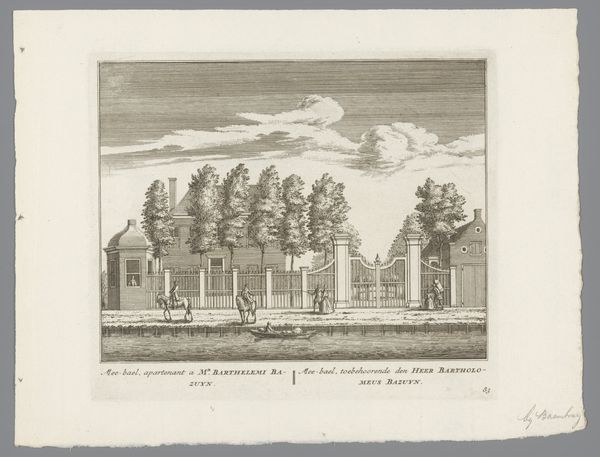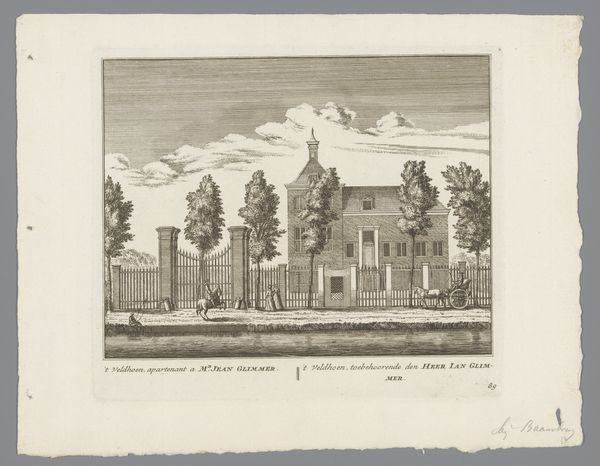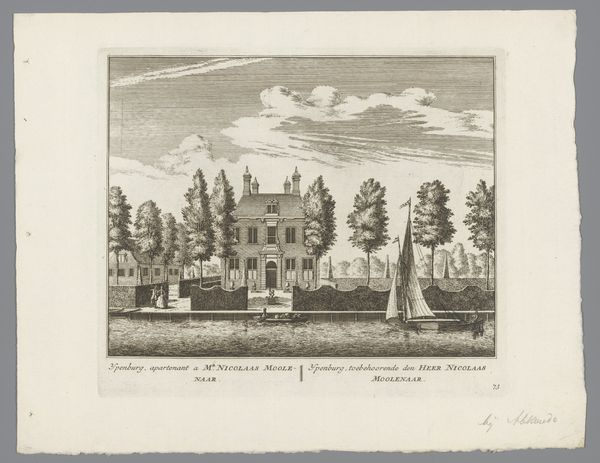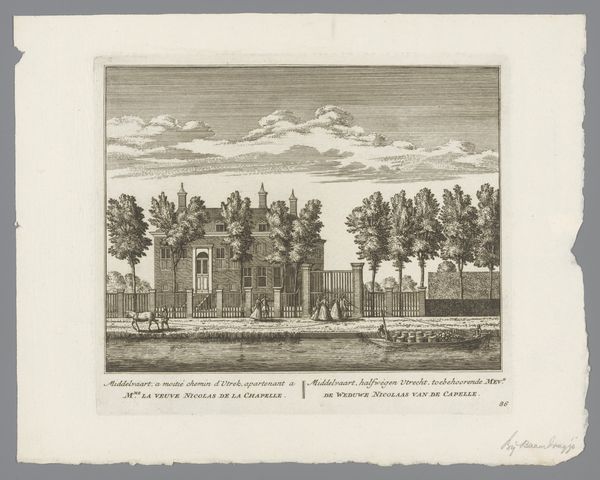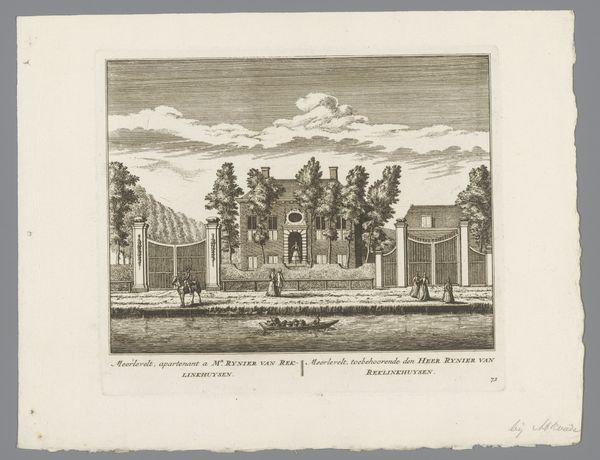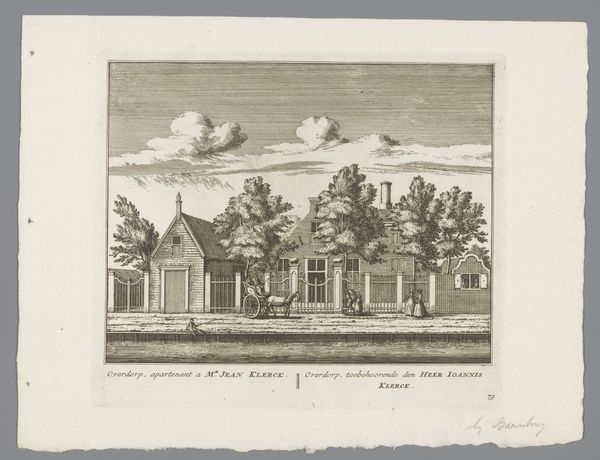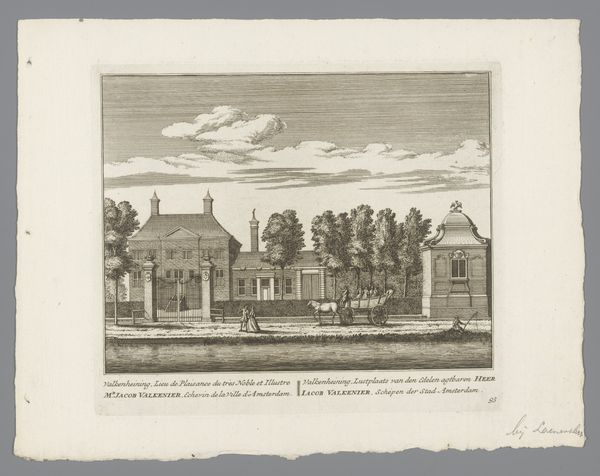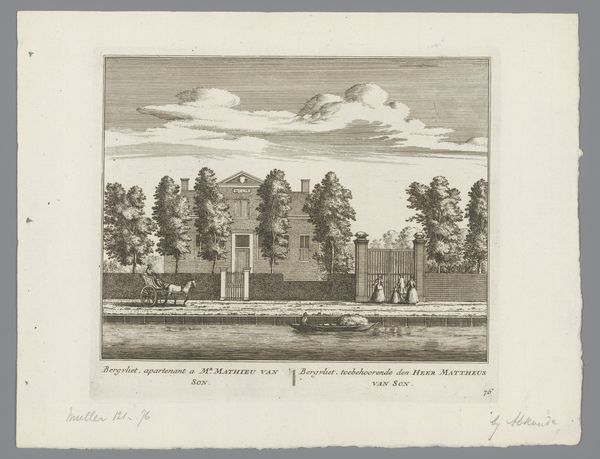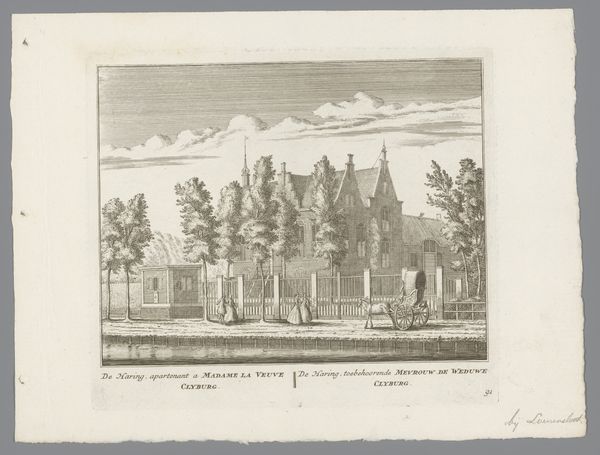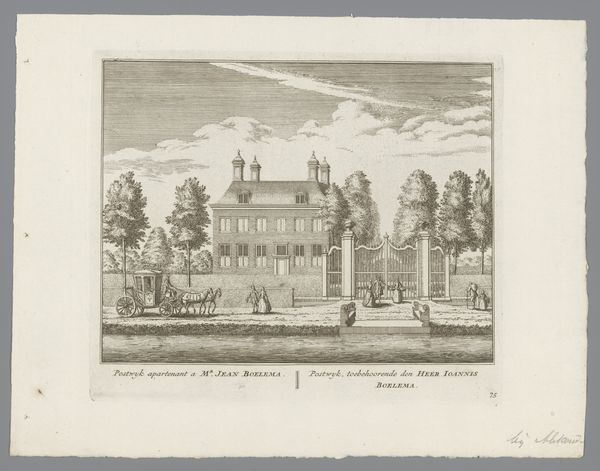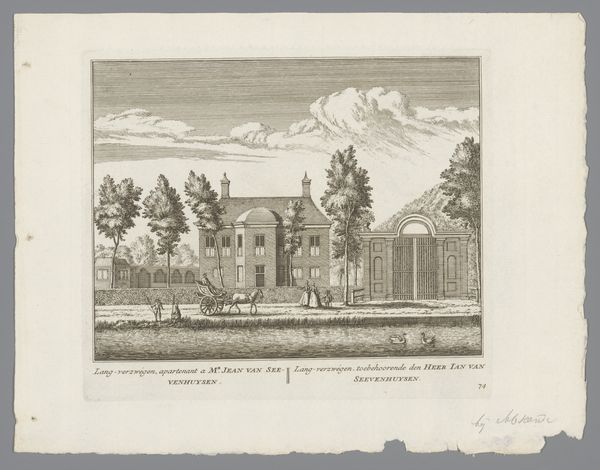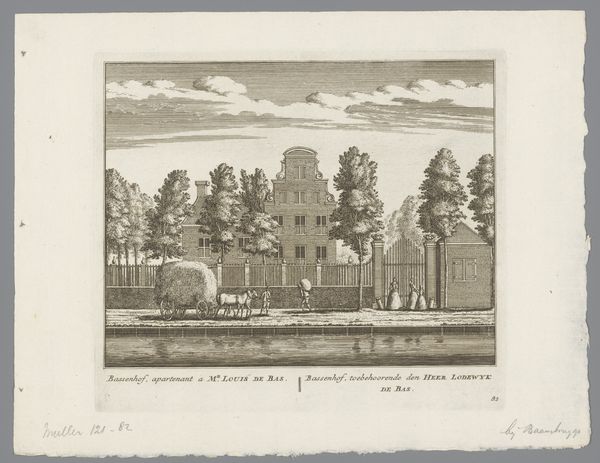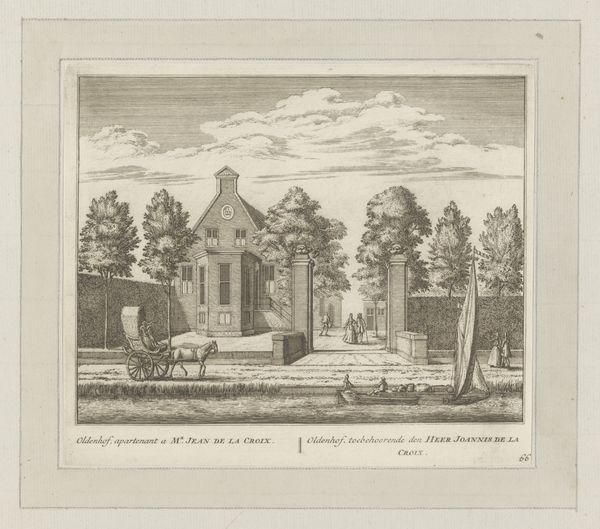
print, etching
#
baroque
#
dutch-golden-age
# print
#
etching
#
landscape
Dimensions: height 173 mm, width 200 mm
Copyright: Rijks Museum: Open Domain
Curator: This is an etching by Abraham Rademaker, dating back to 1730. The work is entitled "View of the De Patiëntie Estate near Baambrugge". Editor: Well, it has this dreamy stillness about it, doesn’t it? All those delicate lines, it's like a memory floating on the surface. It looks like a very expensive property on the water. Curator: The location offers an interesting view into 18th-century Dutch society. Country estates like De Patiëntie represented wealth and social status, and it's telling how these are placed alongside waterways of commerce, but with its visual focus squarely on the pristine building. The print gives insight into how the Dutch Golden Age country lifestyle was something of admiration to the burgeoning middle classes. Editor: Totally get that aspirational vibe. There's a certain... order. The symmetrical trees, the perfectly fenced property. Makes you wonder about the people who lived there. Were they as... contained as the etching suggests? Curator: Perhaps. But this etching offers us a window into the broader cultural currents of the time. In focusing on cultivated leisure, Rademaker also draws on Dutch Golden Age and Baroque styles of landscaping to underscore social structures related to class. This intersects with Dutch debates about what it meant to perform refinement during this period. Editor: Ah, yes. What story do the inhabitants tell, literally perched as they are between road and property? A horse drawn carriage appears off to the left, giving a sense of scale to what would have been seen as a getaway estate from the busy, more cramped confines of city life. Curator: And that contrast extends into today; a physical place like that existing for that purpose—but that social gap between who benefits and who can’t even get close remains just as acute. Editor: Makes you think about accessibility, doesn’t it? Then and now, who gets to enjoy the scenery, literally and metaphorically? So much story for something so...still. Curator: Indeed. The print is a valuable historical document, as well as being artistically and technically accomplished, reminding us that seemingly simple images can hold complex meanings about ourselves as people and communities. Editor: I’m walking away thinking less about the house, actually, and more about those figures, the life beyond it, the echoes and questions the artwork is giving.
Comments
No comments
Be the first to comment and join the conversation on the ultimate creative platform.
